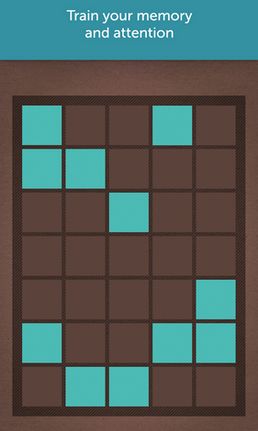
.jpg)
Third, they are relatively inexpensive and widely available on computers, tablets and smartphones.
LUMOSITY COLOR MATCH GAME TRIAL
Second, they are short and self-explanatory: each test takes about 45 seconds, so a trial run and two test runs can be done in less than three minutes. First, they happen to be computer-based adaptations of pre-existing, non-computerized, validated psychometric tasks that test cognitive domains known to be important in minimal hepatic encephalopathy. We chose these games because they had certain properties that made them very attractive as potential tests of minimal hepatic encephalopathy. We wondered whether computer brain-training games developed by Lumosity could identify subtle, undiagnosed cognitive impairments in patients with cirrhosis. It thus continues to negatively affect patients’ quality of life, including their ability to work and, importantly, to drive safely. Because of this problem, the condition often remains undiagnosed and untreated. Unfortunately, minimal hepatic encephalopathy cannot be diagnosed without complicated, lengthy, paper-and-pencil psychometric tests that need to be administered by trained psychologists. Hepatic encephalopathy can range from subtle abnormalities of attention and concentration, sometimes called minimal hepatic encephalopathy, to profound impairments and even coma. When the liver develops cirrhosis, it fails to clear certain toxins and metabolic byproducts from the blood these chemicals thus accumulate and impair brain function. My colleagues and I were specifically interested in the cognitive impairment that occurs in patients with cirrhosis of the liver, known as hepatic encephalopathy. More importantly, early, subtle or insidious cognitive deficits related to these conditions may remain undiagnosed and untreated for years.

Irrespective of whether such games can actually improve brain function, is it possible to use these games for testing attention, working memory, visuospatial memory, processing speed and response inhibition? These domains may be impaired in a wide variety of medical conditions such as dementia, depression, attention deficit hyperactivity disorder (ADHD), liver disease and renal disease. This may be particularly true of video games that are marketed as “brain training” games. The idea is that if scoring well on a video game requires a specific cognitive skill, then individuals who score especially poorly on this game may have a deficit in that skill. One aspect of video games that is less often discussed is their potential to test or screen for cognitive deficits. One thing is certain: video games are here to stay and their introduction represents an unintended social experiment with as widespread implications, good or bad, as the introduction of radio or television. Others believe that video games can actually improve brain and cognitive function. Some suggest that video games may decrease attention and promote antisocial behavior or even violence. Lively debates abound on blog sites on this controversial topic, with highly polarized camps.

As humans of all ages spend more and more time gaming, scientists as well as pundits have wondered whether this common activity has important effects, positive or negative, on brain development or cognitive function. Video games are an increasingly common pastime, especially for children, adolescents and young adults.
LUMOSITY COLOR MATCH GAME CODE
The magazine’s special November/December issue similarly highlights the interface between code and thought in profiling a future, more digital YOU.
LUMOSITY COLOR MATCH GAME SERIES
This blog is the third in a series of guest posts on technology and the brain to celebrate Scientific American Mind’s 10-year anniversary.


 0 kommentar(er)
0 kommentar(er)
